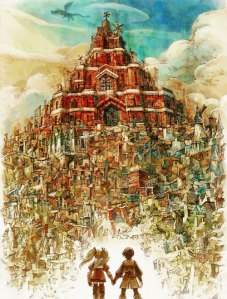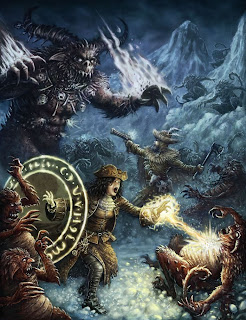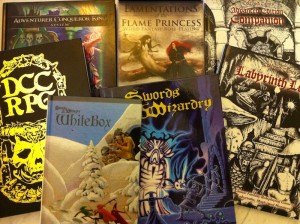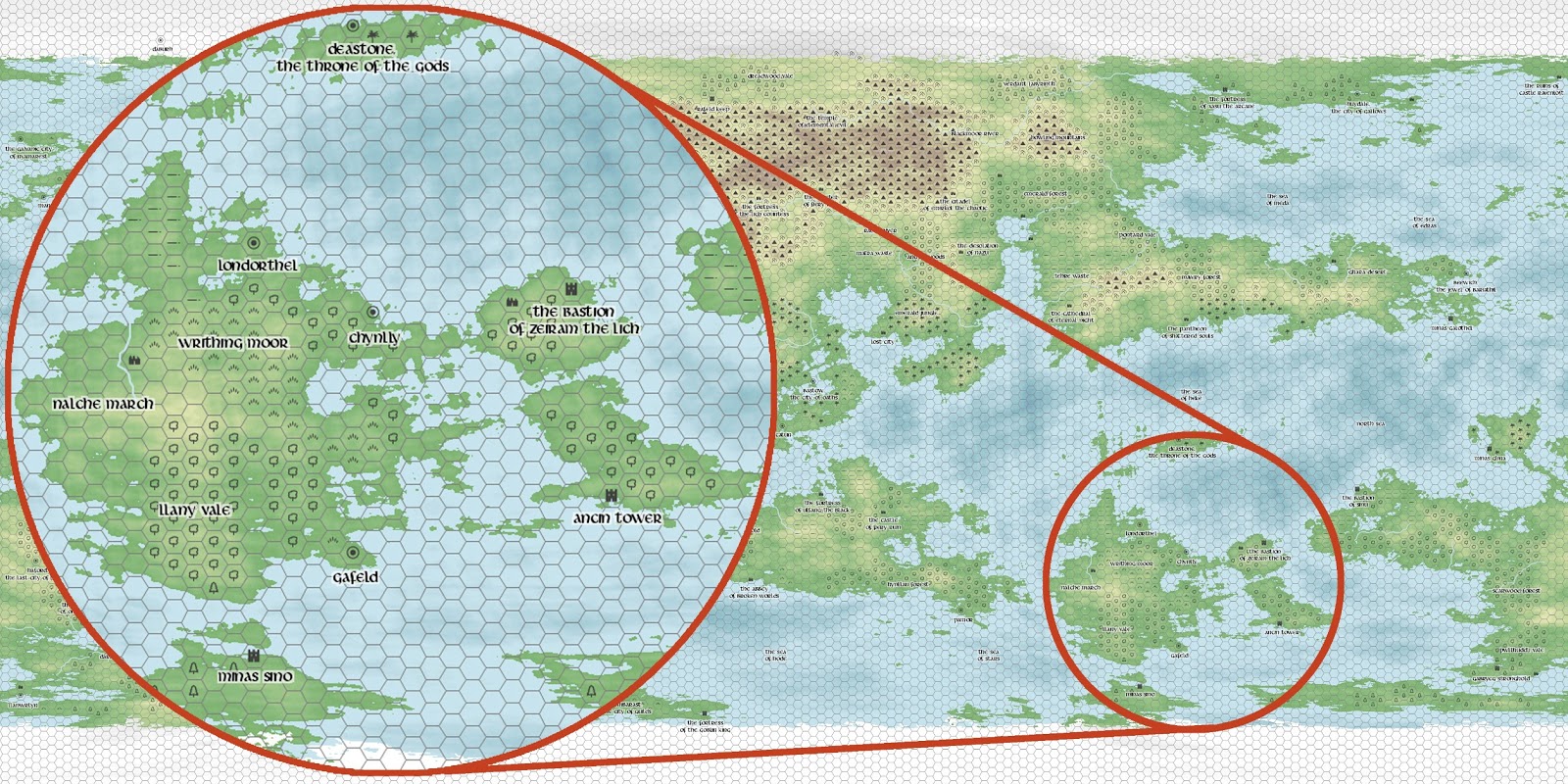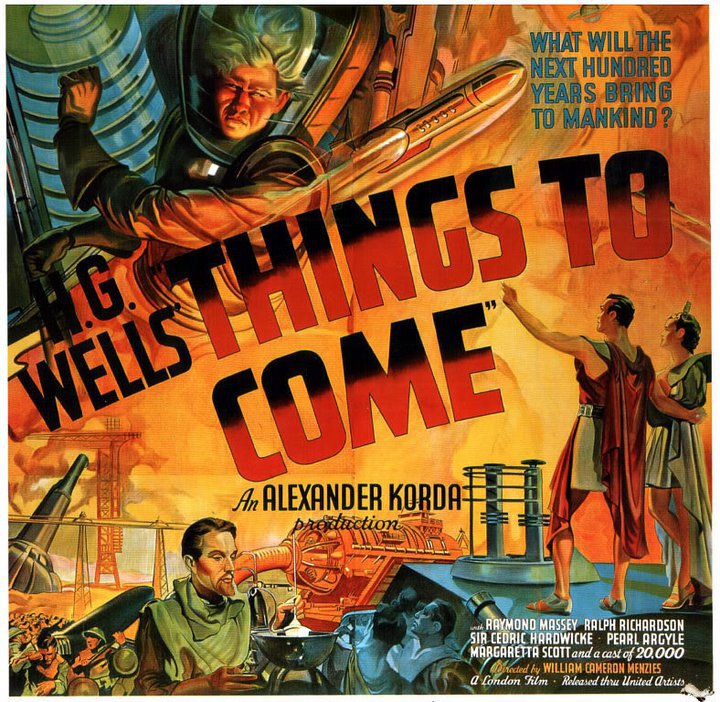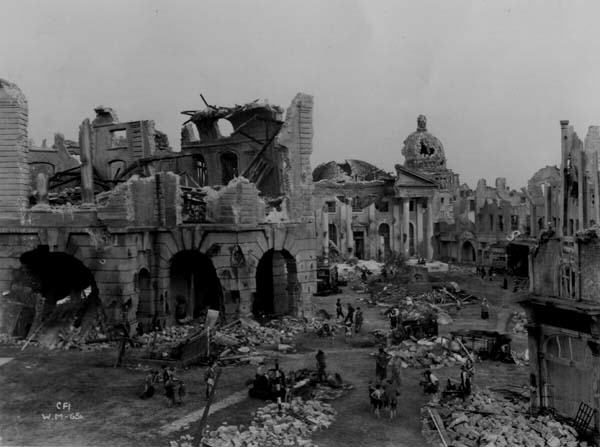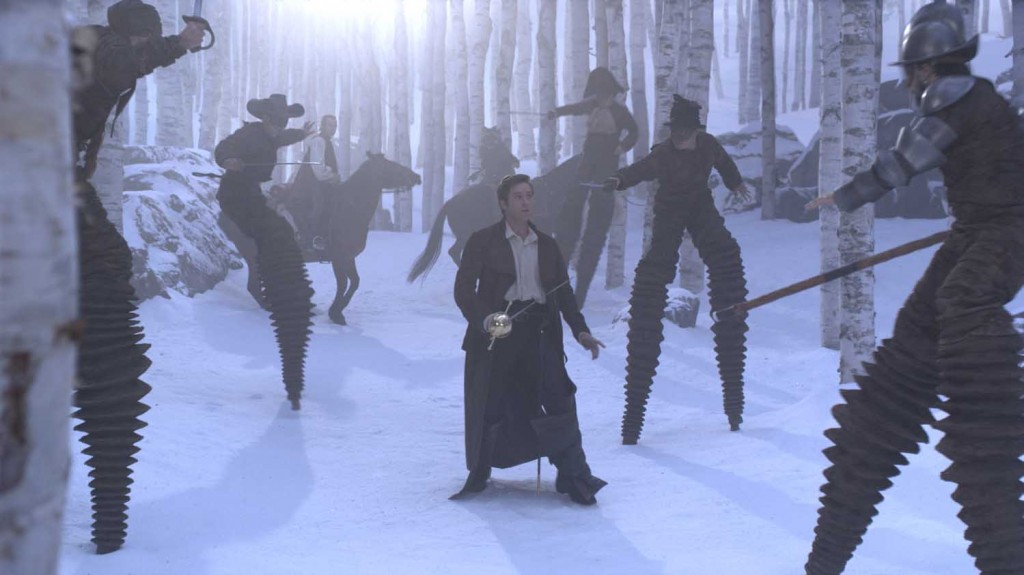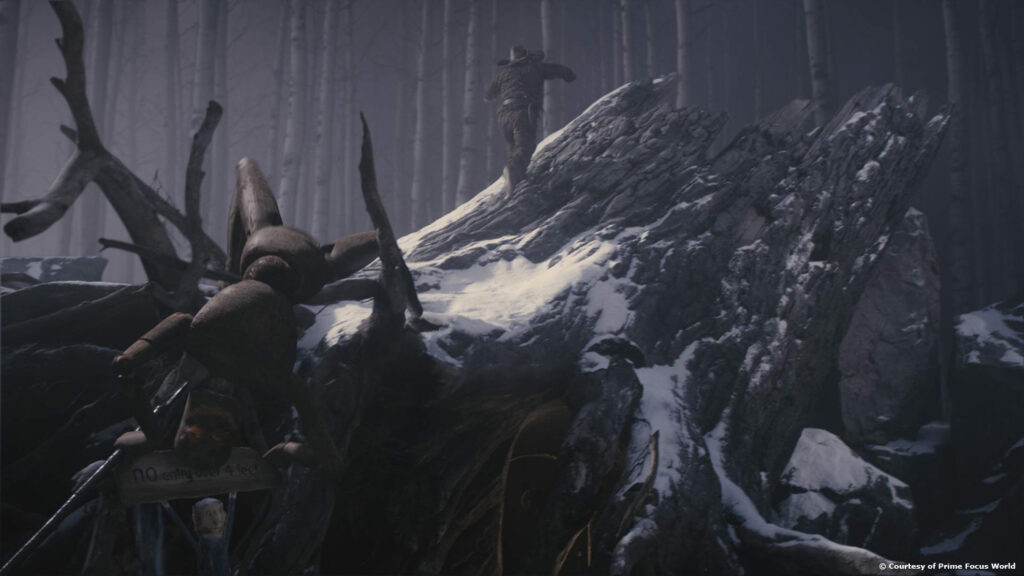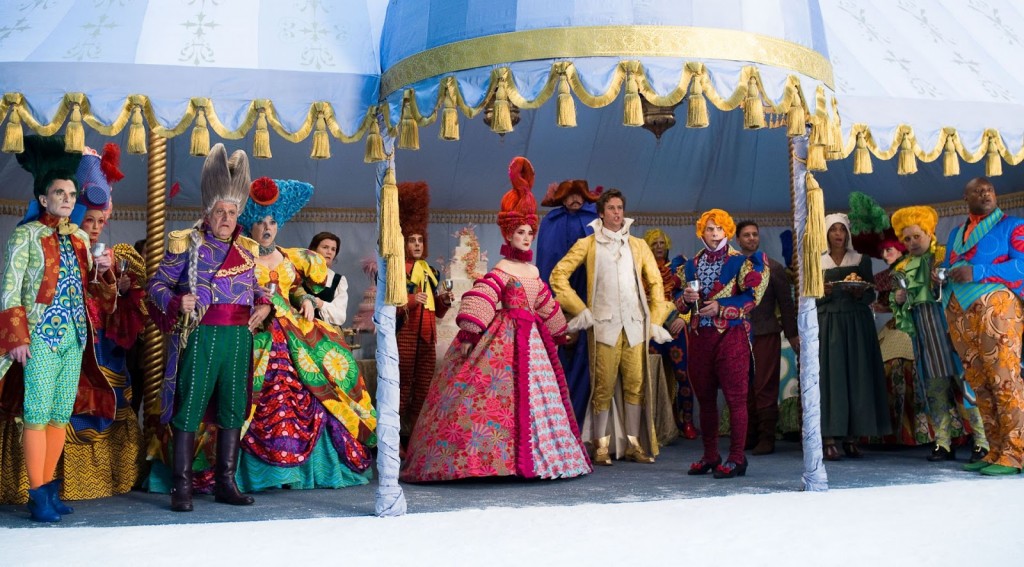 There was mention of a kingdom or province called K'naa in a very ancient land where the first human people had found monstrous ruins left by those who had dwelt there before - vague waves of unknown entities which had filtered down from the stars and lived out their aeons on a forgotten, nascent world. K'naa was a sacred place, since from its midst the bleak basalt cliffs of Mount Yaddith-Gho soared starkly into the sky, topped by a gigantic fortress of Cyclopean stone, infinitely older than mankind and built by the alien spawn of the dark planet Yuggoth, which had colonised the earth before the birth of terrestrial life.
There was mention of a kingdom or province called K'naa in a very ancient land where the first human people had found monstrous ruins left by those who had dwelt there before - vague waves of unknown entities which had filtered down from the stars and lived out their aeons on a forgotten, nascent world. K'naa was a sacred place, since from its midst the bleak basalt cliffs of Mount Yaddith-Gho soared starkly into the sky, topped by a gigantic fortress of Cyclopean stone, infinitely older than mankind and built by the alien spawn of the dark planet Yuggoth, which had colonised the earth before the birth of terrestrial life. -“Out of the Aeons”—H.P. Lovecraft and Hazel Helad.
Introduction:
Tens-of-thousands of years before the rise of the Mesopotamia or the Kingdoms of Egypt, even before fabled Atlantis, there was realm of great wonders and eldritch terrors. Modern theosophists and occultists speak of another ancient lost continent in the Pacific, where mysterious gods from beyond time and space were worshiped with blasphemous rites. A land where mighty human kingdoms rose and fell among the ancient cyclopean ruins built by the spawn of Great Cthulhu and other alien horrors and where the monstrous cult that worships the most hideous of them all grows in power with the passage of time.
You are an adventurer, a sell sword, a cut-throat for hire, a scholar of secrets of the Great Old Ones, or one of the worshipers of the remaining gods allied with man. You will wander steaming jungles teaming with deadly beasts, revel in cities filled with dark intrigue, and explore dark and forbidden places of in search of wealth and glory. If death does not find you first, then the madness that will come with understanding the true nature of humanity and its place in this cosmos surely will!
Welcome to the lost continent of Mu.
Mu is a horror/fantasy setting for Swords and Wizardry and other OSR fantasy games based on some of the more obscure aspects of H.P. Lovecraft’s Cthulhu Mythos. While most of Lovecraft’s stories take place in or around the era he lived, mention is often made of lost prehistoric civilizations where worship of his terrifying Great Old Ones and Outer Gods was common place. “Out of the Aeons,” quoted above, first made brief mention of the lost world of Mu where the cult of
Ghatanothoa, the monster of Mount Yaddith-Gho, reigned supreme. Decades after Lovecraft’s death,
Lin Carter expanded the Mu storyline with his
Xothic Legend Cycle, but most of these stories took place in the modern era; only two stories, “The Red Offering” and “The Thing in the Pit,” actually took place in ancient Mu.
Characters/Classes:
Mu is decidedly a human setting. The traditional fantasy races like elves and dwarves simply do not exist as either player characters or NPCs. PCs may be Fighters, Magic-Users, Clerics, Thieves, or Assassins; however, Paladins and Rangers are not a good thematic fit to this setting and should be excluded. It’s also a god idea to abandon the concept of alignment. Adhering to high-minded concepts of “Law” and “Chaos” has no place in the bloodsoaked kingdoms of Mu.
This setting is very much in the Swords & Sorcery vein, so you may want to consider replacing the Magic-User and Cleric classes with the
Magician class (along with the magic system) to represent sorcerers and priests from Akrasia’s
Akratic Wizardry blog or from D101’s Swords & Wizardry variant “
Crypts & Things.”
Being the descendents of the people who would go on to become the Indians, Mesoamericans, Polynesians, and other Pacific-rim peoples, native-born Muvians have coppery skin and black hair and eyes. Foreign adventurers and slaves from other lands across the great ocean that surrounds Mu of all colors and types are not unheard of.
Magic:
For the time being, GMs may use most of the spells from the S&W corpus with no changes. Players may wish to modify or remove the monster and elemental summoning spells. Again, Akrasia’s rules (see above) are a better fit for the sanity-eating, magics practiced by the obscene sorcerers and loathsome priests of Mu.
Remember, this is not meant to be your usual “heroic” high-fantasy RPG setting. Magic in Mu tends to be the purview of the amoral, insane, or utterly depraved. Also "
Realms of Crawling Chaos" from Goblinoid Games adds many new and genre specific spells that you may want to considering adding.
Monsters:
Here’s where things get a little problematic for the time being. Like non-human player character races, the standard S&W bestiary of orcs, trolls, and dragons are sort of inappropriate in a setting filled with inter-dimensional abominations. However, while at this time there are no “official” S&W rules for Cthulhoid monsters, you can find appropriate stats in "
Realms of Crawling Chaos" from Goblinoid Games, "
Carcosa" from Lamentations of the Flame Princess, or "
Astonishing Swordsmen and Sorcerers of Hyperborea" from North Wind Adventures. For the creation of new creatures, Jim Raggi's "
Random Esoteric Creature Generator" is an invaluable resource for the GM who needs a quick Saturday Night Special monster to throw at your players.
Other Recommend Setting Rules:
Akrasia's Sword and Sorcery House Rules for S&W, which are restated in "Crypts & Things" from D101, add a number of rules that make playing in Mu a richer role-playing experience. The rules from Aktatic Wizardry I'd particularly recommend four your Mu campaigns include:
-
Sanity: It just would not be a Lovecraftian role-playing game without the chance of your character's becoming gibbering madmen.
-
Saving Throw Task System and Background Skills: While task systems and skills are usually viewed withing the OSR as heretical mechanics that complicate the simplicity of the rules, I think task systems keep the GM honest (and you should never trust the GM) and frees the players from the tyranny of GM fiat. At the same time, background skills give your character a little more flavor than just "Fighter" or "Thief," etc..
-
Hit Points and Constitution: Your PCs are going to need these rules, especially when tentacles come slithering at them.
Campaign Setting:
History:
Hundreds of millions of years ago, long after the Elder Things first seeped down from space to colonize the primordial Earth, the landmass that would be known as Mu arose from the seething oceans. The Elder Things, who at this point were beginning to leave their original cities in the deep ocean for the land, soon established settlements upon Mu and the continent that would eventually be known today as Antarctica. However, the Elder Things’ dominion over the Earth would soon be challenged by a force beyond all reckoning.
Great Cthulhu, high priest of the Great Old Ones, and his spawn swept down from stars and laid claim upon the Elder Thing’s territories. A series of devastating wars erupted between the Elder Things and Cthulhu’s kin, until a bitter truce was established that allowed the Elder Things to keep their colonies in ancient Antarctica, while the Great Old One ruled Mu from his mighty city of R’leyh. For many thousands of years an uneasy peace settled over Earth until the fateful day when R’leyh would mysteriously sink beneath the waves taking Cthulhu and his spawn with him. With the star-spawn gone, the Elder Things quickly reestablished their presence upon Mu.
Even after the passing of Cthulhu, the Elder Things would eventually have to compete with other monstrosities who also lay claim to Mu. The Great Race of Yith, whose disembodied minds would find sanctuary within prehistoric cone-shaped beings, soon were fighting for territory and resources with the Elder Things as well as against the polypoid race that preyed up them. At about the same time, the Fungi from Yuggoth arrived from their fastnesses in the Kuiper Belt to start mining operations in Mu’s mountainous regions. It was the Mi-go who brought the dreaded Great Old One Ghatanothoa to Earth. Whether they did so to venerate it or to imprison it, no one can be sure. Then, the serpent men arose to sentience and built their own cites and temples dedicated to Yig in Mu’s lush jungles. Over the next several million years, conflict between one or several of these races would follow truce followed again by yet more conflict. However, as with all things, it did not last forever.
The empires of serpent men in Mu and Atlantis collapsed during the Triassic period and their remnants were driven to the deepest jungles or underground. After the end of Mesozoic Era, Earth’s climate began to become cooler, and the glaciers of the Ice Ages started to creep down from the Earth’s poles. The Elder Things, weakened by internal struggles with their own slave race, the loathsome shoggoths, succumb as the ice engulfed Antarctica. The Mi-go either abandoned their mountainous colony or mysteriously died out completely. The Yithians, knowing that they would soon be overrun by the vengeful polyp race they had imprisoned long ago, abandoned their cone-shaped forms for the safety of Earth’s distant future. For untold eons, the continent of Mu was uninhabited. The cities and shrines of the aliens who has once dwelt there were left to time and and elements. Then, a new race arrived to claim Mu as their own: Humans.
The first men of Mu were but nomads who migrated from Asia. Over the next several thousand years, as humanity penetrated into the continent’s interior, outposts became villages, villages became cities, and cities became kingdoms. Along the way, they came upon the ruins of those who had ruled Mu before. The psychically sensitive among, through dreams and visions, learned of the Old Ones, and worshiped them as gods, erecting temples to their glory and making what sacrifices they believed would be fit; Great Cthulhu, who still sleeps beneath the waves of the southern sea; Yig, lord of all serpents; the twin deities of Nub and Yug; the Mighty Mother, Shub Niggurath, bringer of life and pleasure; and many, many others. Then, whether it was by fate or by the perverse whim of some otherworldly intelligence, one group of pilgrims ascended the heights of Mount Yaddith-Gho to the ruins of the Mi-Go’s colony where they discovered the horror that is Ghatanothoa. Those who survived the encounter with that monstrosity would go on to start his equally monstrous cult.
Geography:
In “Out of the Aeons, ” Lovecraft and Heald mention the kingdom or province of K’Naa, where the Mount Yaddith-Gho exists and cult of Ghatanothoa holds sway over K’Naa’s puppet king. No other regions are named in this story, but the authors mentioned that “and nations rose and decayed” with only K’Naa remaining to the bitter end, implying that throughout the millennia, the political map of Mu was as fluid as any continents. In Lin Carter’s Xothic Legend Cycle stories “The Red Offering” and “The Thing in the Pit” other locations in Mu are mentioned, but for the sake of not treading on the late Mr. Carter’s copyrights, our campaign setting Mu takes place sometime in between the high priest T’yog’s attempt to subdue the monster of the Monster of the Mount and the final calamity that wiped Mu from the globe. We’ll assume that the kingdoms mentioned in Carter’s tales existed only before the fall of Mu. (Lovecraft was notably generous with other writers using and expanding upon his Mythos. I don’t know if the same holds true with whomever holds the rights to Mr. Carter’s works. Since I’m only a poor, underpaid, call center representative, we’ll not tempt the demonic ire of any IP lawyers out there by sticking to what’s in the “public domain.” ) This gives GMs more or less a clean slate from which to build their own worlds with their own kingdoms and pocket empires, all under the tightening grip of Mighty Ghatanothoa's cult.
In other words, I don't yet have a campaign map ready, and maybe it might not be a good idea to attempt to. In the meantime, use the limitless boundaries of your imagination and invent your own Muvian kingdoms.
Climate:
The majority of Mu lies along the equator and within the tropics, making for a rather hot climate. Generally, the regions to the west of the Great Central Mountains are covered in dense, sweltering rain forests. Over the mountains, which blocks the moist tropical air, the eastern provenances are occupied by thousands of miles of broiling deserts. The only regions that reach anything approaching “temperate” status are the southern coast of Mu as well as the high foothills surrounding the mountains.
Culture:
Mu is harsh land, ruled by absolutism, the sword, and dark powers beyond sane mankind's comprehension. As with most ancient societies, the vast majority of people will live a lifetime of poverty with no hope for upward social mobility. Slavery is also a fact of life on Mu, where individuals can find themselves indentured for unpaid debts, as punishment for minor crimes, or taken from other lands by raiding parties. There is little in the way of a "middle class" on Mu. There are rare examples of well-top-do farmers and merchants who enjoy a relatively better life than their peasant neighbors, but the truth is that most of the wealth is concentrated in the ruling elite: the hereditary nobility and the Temples.
In Mu, modern concepts of justice do not apply. There are no courts or juries here and guilt or innosence is usually dealt out by sadistic whim of the local authorities. Most petty criminals face the flogging post, torture, mutilation, or even being sentenced to a life of slavery. More serious crimes have but one sentence: death. As with all societies, class differences greatly effect how a wrong doer is dealt with. If a noblemen's son rapes the daughter of one of his peasants, no crime is considered to have happened. If a peasent rapes (or is even suspected of raping) a noblemen's daughter, he will quickly find himself being dragged to the imapler's stake.
Due to the sweltering climate, there are few if any nudity taboos anywhere in the principalities of Mu. In the jungle lands, the poorest peasant farmers get through their day-to-day lives wearing little more than a homespun loincloth. More prosperous individuals can afford better material with jewelry made of wooden beads of semi-precious stones. Meanwhile the nobility wear silken skirts or sarongs, bracelets and anklets made of precious metals, elaborate headdresses, and paint their skin with elaborate patterns with a plant dyes similar to henna. Denizens of cooler climates tend to wear considerably more—leather tunics, pantaloons, or skirts—but for practicality sake and not out of any sense of “modesty.”
The kingdoms of Mu are largely patriarchal with few opportunities for women. Most young girls, regardless of status, find themselves betrothed to their future husbands as soon as it is certain that they will live to see adolescence. A wife is considered the husband’s property and after their marriage rituals are concluded women face a life of household duty and childbearing without any hope of independence. In some Muvian kingdoms, it is common practice to pass widows onto male relatives as an inheritance. There are exceptions: Women born into wealth and power can often buy their own equality and find themselves in places of government or the temples. Also, a unmarried woman can voluntarily disown herself from her family dissolving all ties once and for all. Once the decision is made, there is no going back, and a woman liberated thus is considered dead to her kin and must now fend for themselves. Those who don’t die from starvation or sell themselves into slavery make seek whatever profession they are able to perform: priestess, merchants, scholars, even warriors.
Muvian sexuality is also reflects their penchant for male chauvinism and privilege. A married woman is expected to faithful to their husband and no one else. Meanwhile, no such expectations are placed upon the male, who may take as many lovers as he wishes. A female adulteress usually faces dire consequences if her infidelity is ever discovered. Independent woman enjoy that same freedom, but lose it if they ever choose to take a husband. (Needless to say, women who choose the path of independence tend to stay that way, allowing them to love whom they choose.) Other than that, there are few sexual taboos. Most Muvian adolescents experiment with sex before their marriages are made final. As long as there are no unexpected pregnancies to spoil a betrothal, there is no expectation that either bride or groom be virgins on their wedding day. Herbal contraceptives for both men and women, as well as abortifacients, do exist, but they are expensive. Homosexuality and bisexuality are tolerated, but the same standards apply; a man may have a male paramour, but a married women may not take a female lover anymore than she could enjoy another male.
.
Religion:
Perhaps the most important aspect of Muvian society is the role that religion plays. In most Cthulhu Mythos fiction set in modern times, the knowledge of the Great Old Ones and the Outer Gods are largely unknown and their worship is conducted in secret by degenerate cults and insane dabblers in sorcery. However, in the time of Mu, these beings are commonly known and worshiped openly, mostly out of fear of that being's wrath, but sometimes with sincere (if misguided) reverence. Here are a few notable examples:
Ghanatothoa:Of all the religions practiced upon Mu, the Temple of Ghanatothoa is by far the most powerful, devious, and cruel. The primary reason is that unlike the other gods who either slumber unseen in the hidden places of the world or dwell beyond our universe of space and time, Ghanatothoa is real and present fact. Any one brave (or insane) enough many journey up the slopes of Mount Yaddith-Gho to the Great Old One’s citadel and see it for themselves. Granted, they will never return, but they can see it.
Initially, the Cult sincerely believed that their rituals and sacrifices were all that kept the Monster of the Mount at bay, but over the centuries the power and wealth that such fear could create was too irresistible to ignore. Even the mightiest king can be swayed something as a overt mob of frightened peasants fearing that their ruler’s disobedience to the Cult’s wishes will lose Ghanathothoa upon their lands, to something as subtle as the vague suggestion that their beloved son or daughter may find themselves one of the fortunate few selected to die upon the temples flaming altars unless certain demands aren't met.
They are everywhere. After what would commonly be known as “T’yog’s Folly,” the temple’s hold over the rulers of Mu became nigh-absolute. There is nary one royal adviser or chamberlain in any kingdom of province who does not wear the vestments of a priest of Ghanatothoa. Custom grants their priesthood the power of life and death over any subject, excluding the king or a brother priest. Every major city has one holy place set aside for them. The temple employs spies to keep a watchful eye upon their enemies, publicly executes those who need to be made a public example of, and hires assassins to silence those who need to be killed quietly.
The priesthood of Ghanatothoa guards their power jealously, and for good reason. Even the priests of the lowest rungs of the temple hierarchy enjoy “…a marble house, a chest of gold, two hundred slaves, and an hundred concubines…” Having nearly exclusive access to the Mi-go ruins on and around their holy mountain, it is whispered that the temple has possession of many technological and magical devices left behind by the Fungi from Yuggoth. Scholars and sorcerers from all corners of Mu often petition the temple to examine any such alien wonders. They are almost always turned down.
Shub Niggurath:
Before the dominion of the Ghanatothoa’s sect engulfed Mu, the most powerful and influential of the continent’s religions was the worship of Shub Niggurath, the Mighty Mother, Black Goat of the Woods with Thousand Young. Revered by many, this primal goddess personifies the forces of nature, fertility, birth and sexual ecstasy. In the farms and villages, peasants venerate her and make offerings at her shrines for plentiful crops and healthy offspring. Within the great copper gated temples found in most major cities, sacred courtesans, anointed to take on the role of the goddess herself, are willing to bestow the gifts of Shub Niggurath to those with the coin. Her holiest days are the Equinoxes, were before and after the winter rainy season, the cyclic beginning and ending of life are celebrated with public feasts, orgies, and sacrifices.
As the followers of the Monster of the Mount started to grow in strength, they began to directly opposition with the Temple of Shub Niggurath. After decades of conflict, the High Priest T’Yog devised a plan he hoped would weaken the cult of Ghanatothoa low once and for all. Constructing a talisman his research showed would render him immune to the Great Old One’s petrifying powers, T’Yog climbed the slopes of Mount Yaddith-Gho hoping that with the aid of his Goddess, the alien horror would be laid low at last. He never returned. Humiliated by T’Yog’s failure, the Temple of Shub Niggurath lost most of their political favor as fear of the Ghanatothoa’s power swayed the kings and princes of Mu to his temple. Even though the faithful still come, the temple is diminished shadow of its former decadent glory but has been rendered impotent as the despotic grip of the Temple of Ghanatothoa tightens around it.
Cthulhu:
Millions of years before humanity ever set foot upon Mu, Great Cthulhu and his spawn ruled the continent until whatever unknown calamity sent their city of R'Lyeh under the sea. Time and the elements have destroyed most remnents of Cthulhu's reign, but his memory is kept alive by his cult and runs of his civilization can be found in dark and dangerous places. Even though he lies in a death-like sleep somewhere on the ocean floor, Cthulhu communicates his desires to the fleshy minds of men though dreams.
Cthulhu worship can be just as bloody and savage as the worship of the Monster of the Mount, but as patron god of the oceans, he most popular among the sailors and fisher-folk of the continent, especially along the southern coast. Legend has it that the undersea ruins R’lyeh itself is somewhere beneath those waters. Due to the incursion of the Temple of Ghanatothoa into the cities, most Cthulhu's worship is found in smaller and isolated seaside villages or port towns. Whether it is from inbreeding or some other hereditary disorder, the most fervent worshipers of Lord Cthulhu are easy to spot: they have large, watery eyes that never seem to blink, scabby peeling skins that worsens with age, narrow heads and inordinately large hands and feet. This look is most common among the middle circles of Cthulhu's priesthood. Outsiders never get to see the high or elder priests at all.

